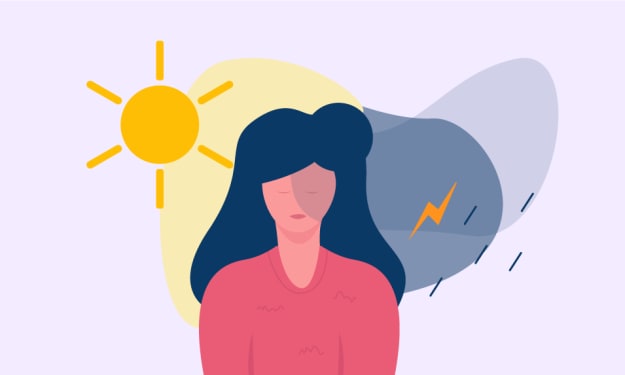Shedding Light on Seasonal Affective Disorder: How Light Therapy Can Help
Shedding Light on Seasonal Affective Disorder: How Light Therapy Can Help

Seasonal Affective Disorder (SAD) is a type of depression that is related to changes in the seasons. It typically occurs during the fall and winter months when there is less sunlight and the days are shorter. The symptoms of SAD include fatigue, depression, irritability, and a lack of interest in activities that were once enjoyable. Fortunately, light therapy has been shown to be an effective treatment for SAD and can help alleviate the symptoms of this condition.
What is Seasonal Affective Disorder?
SAD is a type of depression that is related to changes in the seasons. It is thought to be caused by a disruption in the body's circadian rhythm, which is our internal "clock" that regulates sleep and other physiological processes. When there is less daylight during the fall and winter months, this can throw off our circadian rhythm and lead to SAD effect.
The symptoms of SAD can vary from person to person, but typically include feelings of sadness or hopelessness, irritability, fatigue, difficulty sleeping, and a lack of interest in activities that were once enjoyable. In some cases, SAD can also lead to changes in appetite and weight gain.
How can Light Therapy Help?
Light therapy is a type of treatment that involves exposure to bright light for a certain period of time each day. The light used in light therapy is typically much brighter than indoor lighting, and can be delivered through a special light box or lamp. The idea behind light therapy is that it helps to regulate the body's circadian rhythm and reset our internal clock.
Several studies have shown that light therapy can be an effective treatment for SAD. For example, a study published in the Archives of General Psychiatry found that light therapy was just as effective as antidepressant medication for the treatment of SAD. Another study published in the Journal of Affective Disorders found that light therapy improved symptoms of depression and anxiety in patients with SAD.
The exact mechanism behind how light therapy works is not fully understood, but it is thought to be related to the effect that light has on the body's production of certain hormones, such as melatonin and serotonin. Melatonin is a hormone that is involved in regulating sleep, while serotonin is a neurotransmitter that is associated with mood regulation.
When we are exposed to bright light, it can suppress the production of melatonin and increase the production of serotonin, which can help to alleviate the symptoms of SAD. Additionally, light therapy has been shown to improve sleep quality and help regulate the body's natural sleep-wake cycle.
How to Use Light Therapy for SAD
If you are considering using light therapy to treat SAD, there are a few things to keep in mind. First, it is important to talk to your healthcare provider before starting light therapy, especially if you have any pre-existing medical conditions or are taking any medications.
Once you have received the green light from your healthcare provider, you can begin using light therapy at home. Lightboxes and lamps can be purchased online or in stores that specialize in medical equipment. The light box should emit 10,000 lux of light, which is the amount of light needed to be effective for SAD treatment.
The light box should be used for a specific period of time each day, typically in the morning. The exact duration of light therapy can vary depending on the individual, but it is usually recommended to start with 30 minutes of light exposure each day and gradually increase the time as tolerated.
It is important to position the light box or lamp correctly and to avoid looking directly into the light source. Instead, you should position the light box at an angle and use it while doing other activities, such as reading or using the computer. This can help to reduce eye strain and prevent any negative effects on vision.
It is also important to maintain a consistent schedule with light therapy, and to use it every day even on weekends or days off. This can help to maintain the benefits of light therapy and prevent a relapse of SAD symptoms.
In addition to light therapy, there are other lifestyle changes that can help alleviate the symptoms of SAD. These include getting regular exercise, practicing stress-reducing techniques such as meditation or yoga, and maintaining a healthy diet.





Comments
There are no comments for this story
Be the first to respond and start the conversation.